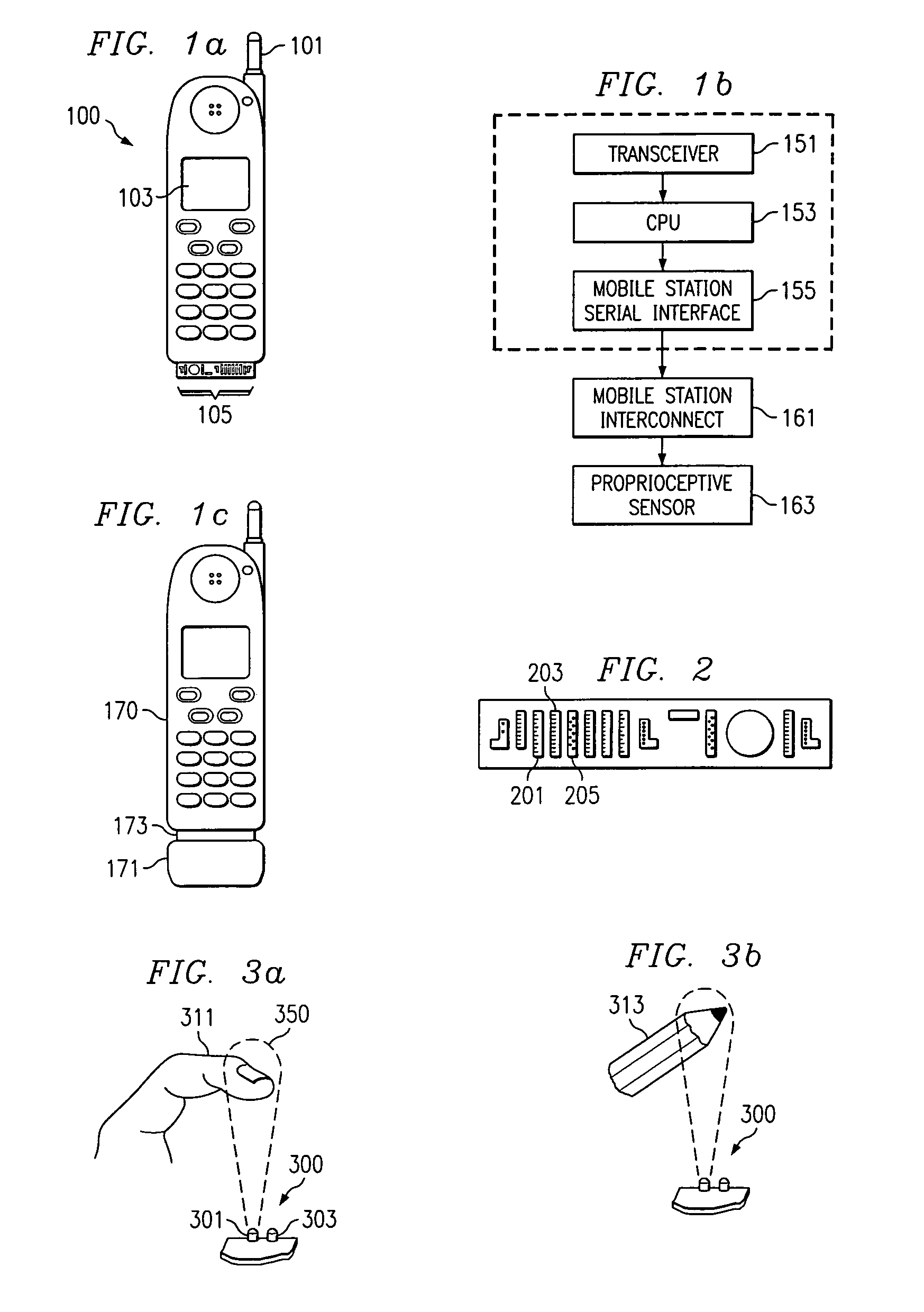Movement and attitude controlled mobile station control
a mobile station and attitude control technology, applied in the direction of instruments, substation equipment, alphabetical characters entering, etc., can solve the problems of t9 interface rarely providing accurate translation to intended words and names, and the interface is often small in size and shape, and the communication has surprised the architects of the gsm standard
- Summary
- Abstract
- Description
- Claims
- Application Information
AI Technical Summary
Benefits of technology
Problems solved by technology
Method used
Image
Examples
Embodiment Construction
[0047]FIG. 1a shows a mobile station 100 of the prior art. The mobile station may have an antenna 101, a display 103 and a mobile station interface 105. The mobile station shown may be a mobile telephone, however it is appreciated that devices such as pagers may be mobile stations also. FIG. 1b shows a block diagram of a mobile station with the parts that comprise an embodiment of the invention. Mobile station may have a transceiver 151. The transceiver may be a transmitter that transmits sound or electromagnetic signals. The transceiver may include a receiver. Transceiver modulates data from a processor 153 onto a carrier for wireless transmission. The transceiver may receive signals and provide a demodulated data stream to the processor 153. The processor may provide data to and receive data from a physical port 155, which may be a serial interface. The embodiment of the invention may have a mobile station interconnect 161, which may couple a proprioceptive sensor 163 to the mobil...
PUM
 Login to View More
Login to View More Abstract
Description
Claims
Application Information
 Login to View More
Login to View More - R&D
- Intellectual Property
- Life Sciences
- Materials
- Tech Scout
- Unparalleled Data Quality
- Higher Quality Content
- 60% Fewer Hallucinations
Browse by: Latest US Patents, China's latest patents, Technical Efficacy Thesaurus, Application Domain, Technology Topic, Popular Technical Reports.
© 2025 PatSnap. All rights reserved.Legal|Privacy policy|Modern Slavery Act Transparency Statement|Sitemap|About US| Contact US: help@patsnap.com



